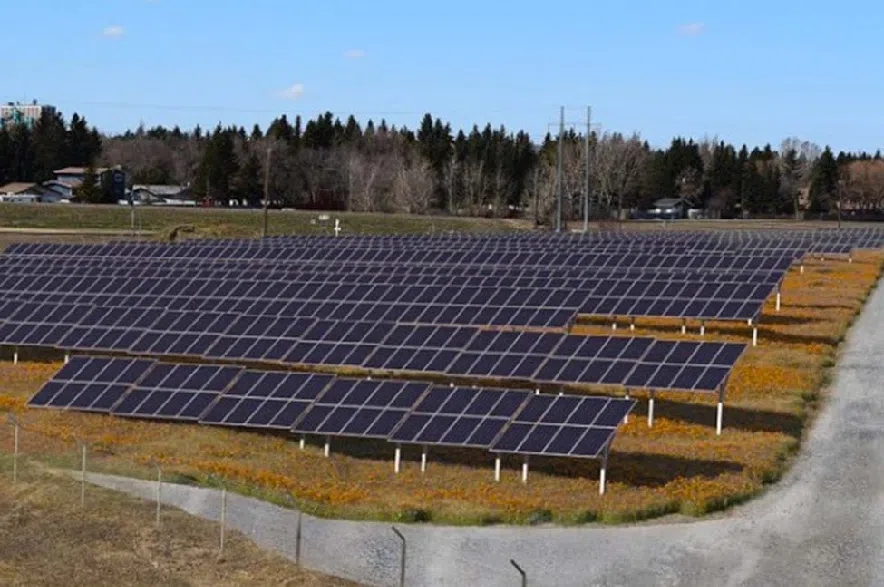A new solar farm in Saskatoon will generate enough power for hundreds of homes while reducing the city’s carbon footprint.
Constructing is set to begin this week on Saskatoon Light & Power’s new 2.8-megawatt solar farm project. The project – the first of its kind in the Bridge City – will be situated on a 14-acre plot of land between the CN railway tracks and the Circle Drive South freeway, east of Dundonald Avenue and south of 11th Street West.
Read More:
- Wildfires leading to more challenges when buying property in northern Sask.
- Warning issued about dangerous red-orange fentanyl found in Saskatoon
- Weaver Park dry storm pond aims to relieve stress around flooding
“The solar farm will support the City’s Low Emissions Community Plan and will make good use of a vacant parcel of land,” Trevor Bell, the power company’s director, said in a statement.
“The generation capacity is enough to power over 400 homes – which is a neighbourhood the size of Richmond Heights or the Willows.”

The project will be built on a 14-acre plot of land between the CN railway tracks and the Circle Drive South freeway, east of Dundonald Avenue and south of 11th Street West. (City of Saskatoon)
Over its 30-year lifespan, the project will reduce power generating emissions by about 19,380 tonnes of carbon dioxide, the city noted, which is the equivalent of removing about 140 cars from the road each year.
“The initial phase of work will involve installing gates, fencing and other security enhancements, followed by the integration of solar panels and electrical components,” the City of Saskatoon explained.
“To enhance biodiversity and add visual appeal, the site will feature native grasses and flowers with vines planted along the existing northwest chain-link fence.”
The site will be regularly inspected to minimize disruptions to the nearby communities, the city said, and to ensure site cleanliness. While the project won’t impact traffic, those living and working nearby may notice some temporary noise and vibration during construction.
The provincial and federal governments are contributing to the project through the Investing in Canada Infrastructure Program, and Ottawa’s National Infrastructure Fund is helping with the naturalization of the site.
More information on the project can be found on the city’s website.











